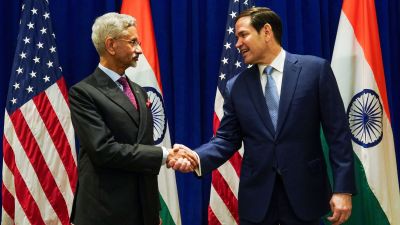Spot the tsunami
As we debate the need for a ‘‘Tsunami Early Warning System’’ (TEWS) in the Indian Ocean, it is important to understand t...

As we debate the need for a ‘‘Tsunami Early Warning System’’ (TEWS) in the Indian Ocean, it is important to understand the challenges involved. Tsunamis cannot be prevented. They will occur so long as submarine earthquakes or volcanic eruptions occur. And because earthquakes cannot be predicted, neither can tsunamis. When a tsunami approaches, the only thing we can do is to flee from low-lying coastal areas. Naturally, it would help if we are warned of an approaching tsunami and given time to collect family and precious belongings before doing so.
The crucial role of TEWS, therefore, is to spot a tsunami as soon as it is born, and track its movements thereafter. But detecting a tsunami is difficult. Titanic energies are released during an underwater quake. The entire sea-bed buckles and heaves; billions of tons of water are compressed and released; and energy in the form of a series of pressure waves radiates outward from the epicenter of the disturbance. Unlike ordinary wind-waves , the tsunami moves in the depths of the ocean. It is not visible on the surface! So long as the water is deep, the tsunami moves at a fairly sedate pace; but as the water becomes shallow (near coastlines) its velocity and height increase with terrifying rapidity. The tsunami of December 26 struck Sri Lanka and Tamil Nadu at an estimated 900 kmph.
Thus, a tsunami becomes visible only when it nears coastlines, or when it is far too late for people to flee. Satellites by themselves cannot spot a tsunami. The only way to detect a tsunami in deep waters is to place thousands of specially equipped buoys at different depths in carefully chosen locations across the Indian Ocean. These buoys will be permanently locked on to satellites. They will constantly monitor characteristics of the waters in their vicinity, and pass on their data via satellite to TEWS stations located in nations bordering the Indian Ocean. The TEWS stations will, of course, be networked. They will continuously share and analyse the data, detect a tsunami when it forms, estimate its destructive potential and instantly warn all nations of the approaching peril. In this way, TEWS will give a precious few hours for people to save their lives.
Clearly, a complete seismo-geological mapping of the Indian Ocean bed would be required in installing a TEWS. This means cooperation among all South and South-east Asian countries which is where SAARC comes in. India must take the lead in developing and installing TEWS. A century might pass without a single tsunami occurring again in the Indian Ocean; yet we must regard TEWS as a vital component of regional security.
Photos


- 01
- 02
- 03
- 04
- 05





























